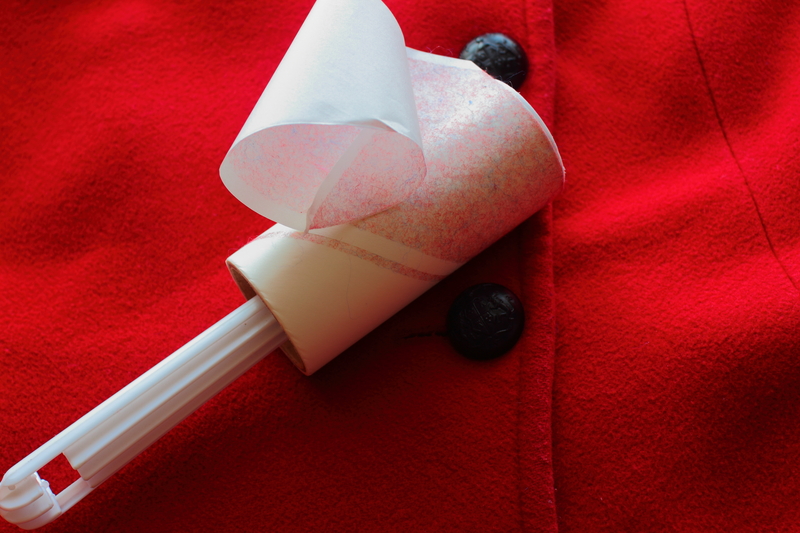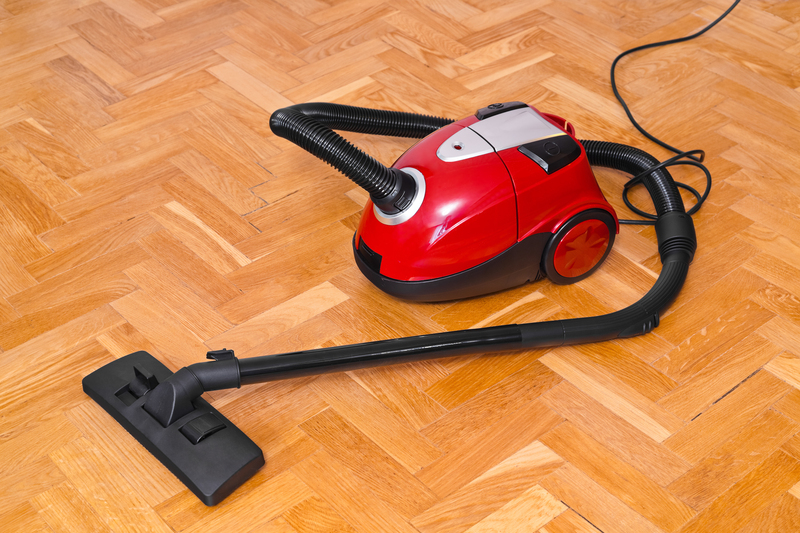Maintaining Velvet Curtains: Safe Washing and Care Instructions
Posted on 26/05/2025
Maintaining Velvet Curtains: Safe Washing and Care Instructions
Velvet curtains are a timeless and luxurious addition to any home, instantly elevating the ambiance with their rich texture and sophisticated drape. However, these beautiful window treatments require special care to preserve their lush look and soft feel. In this comprehensive guide, you'll discover how to clean velvet curtains safely, along with the best tips for velvet curtain maintenance to ensure longevity and enduring elegance.

Why Proper Care Is Essential for Velvet Curtains
Velvet is prized for its plush pile and vibrant color, but its unique texture means it can be more delicate than other fabrics. Improper cleaning methods can flatten the pile, fade the color, or even shrink the material--a costly risk for such a prized home investment. Therefore, learning the right curtain care techniques is essential to keep your velvet drapes looking luxurious year after year.
Understanding Velvet: Types and Characteristics
Before we explore specific cleaning methods, it helps to know what kind of velvet your curtains are made from. Some of the most common velvet types include:
- Cotton Velvet: Natural, soft, tends to have a dense pile. Can be more absorbent and prone to shrinkage.
- Rayon/Viscose Velvet: Has a high sheen and silky feel, but can be delicate and susceptible to water marks.
- Polyester Velvet: Durable and more stain-resistant, often used in modern ready-made curtains.
- Silk Velvet: The most luxurious and delicate, best suited for dry-cleaning only.
The care instructions for these types may vary, so always check the manufacturer's label on your curtains for washing and maintenance guidelines.
General Velvet Curtain Maintenance Tips
Even without frequent washing, proper day-to-day care helps to keep your velvet curtains looking fresh and new. Here are some essential maintenance tips:
- Regular Dusting: Gently vacuum your velvet curtains using a soft brush attachment to remove dust and allergens. Work in the direction of the nap (the raised texture) to protect the pile.
- Brushing: Use a soft, dry upholstery brush to lift and rejuvenate the velvet pile, especially after they've been moved or disturbed.
- Keep Out of Direct Sunlight: Prolonged exposure to strong sunlight can fade velvet's vibrant color.
- Avoid Contact with Moisture: Water can crush the pile or cause rings, so always handle with dry hands and clean up spills immediately.
Spot Cleaning: What To Do with Spills and Stains
Accidents happen, but don't panic! Here's how to manage minor stains:
- Blot, Don't Rub: Use a clean, dry cloth to blot (not rub) the spill as soon as possible. Rubbing can spread the stain or damage the pile.
- Test in an Inconspicuous Area: Before using any cleaning product, test on a seam or hidden spot to check for colorfastness.
- Mild Cleaning Solution: If water is safe for your velvet type, mix a small amount of gentle detergent with lukewarm water. Lightly dab the spot, then blot dry.
Pro tip: For oily stains or if you're uncertain about the fabric, consult a professional dry cleaner specialized in treating velvet.
How to Wash Velvet Curtains Safely
The main concern with velvet is preserving its sumptuous texture and vibrant color. Most velvet curtains are labeled "dry-clean only," especially heavier or lined types, but some modern synthetic velvets may be machine or hand washable. Here's a step-by-step guide for each method:
1. Dry-Cleaning Velvet Curtains
- Always follow the care label. For silk, cotton, or lined velvet curtains, dry-cleaning is the safest choice.
- Choose a reputable cleaner. Inform them that the item is velvet, and ask if they have experience with this fabric.
- Professional steaming may be required to revive the pile post-cleaning.
Dry cleaning helps avoid shrinkage, pile matting, water spots, and color fading.
2. Hand Washing Velvet Curtains (If Permitted)
If your velvet curtain care label indicates hand washing is safe, follow these steps:
- Fill a bathtub or basin with cold or lukewarm water and add a small amount of gentle detergent (like wool wash).
- Submerge the curtain and gently agitate with your hands. Avoid twisting, wringing, or scrubbing, which can damage the pile.
- Rinse thoroughly with cold water until all detergent is out.
- Press out excess water by laying the curtain flat between two clean towels and pressing gently.
- Never wring or twist velvet. This will crush or stretch the texture irreparably.
3. Machine Washing Velvet Curtains (For Some Synthetics)
Polyester or microfiber velvet may be labeled machine-washable, but take every precaution:
- Use a gentle cycle and cold water only.
- Wash solo or with similar items to avoid abrasion.
- Use a mesh laundry bag to protect the fabric.
- Add mild detergent; never use bleach or harsh chemicals.
- Remove promptly after the cycle and lay flat or hang to dry.
Drying Velvet Curtains: The Right Way
Proper drying is vital to prevent damage and maintain texture. Here's how:
- Never tumble dry velvet curtains. High heat can shrink the fabric and ruin the pile.
- Air dry only by laying the curtains flat on a clean, dry towel, or hang them back up to dry, ensuring they're not in direct sunlight.
- While the curtain is still damp, gently run your hand or a brush in the direction of the nap to restore the pile.
It's normal for velvet to take a bit longer to dry. Patience yields the best results!
Ironing and Steaming Velvet Curtains
Avoid direct ironing, as this will crush the luxurious pile of the fabric. Instead:
- Use a handheld steamer to gently ease out wrinkles and lift the pile.
- If you must iron, turn the curtain inside out, place a thick towel under the fabric, and use the lowest setting with no steam. Never let the iron touch the velvet directly; always use a cloth barrier.
- For best results, steam curtains while they're hanging, allowing gravity to help smooth them out.
How Often Should You Clean Velvet Curtains?
Your velvet curtain cleaning schedule depends on your environment--do you have pets, high dust, or allergies in your home? Typically:
- Light Maintenance: Dust and vacuum lightly once every 1-2 weeks.
- Spot Cleaning: As soon as stains or spills occur.
- Deep Cleaning: Once a year, either by dry-cleaning or washing (if fabric allows).
Frequent gentle maintenance prolongs the interval between deep cleans.
Storing Velvet Curtains Properly
When rotating your curtains seasonally or during renovations, proper storage is a must to prevent permanent creasing or crushing:
- Launder or dry-clean before storage so stains don't set in.
- Store flat, not folded, or roll the curtains if possible, to avoid deep creases.
- Keep in a breathable cotton storage bag in a cool, dry place--never in plastic, as this traps moisture and can cause mildew.
If you must fold, place sheets of acid-free tissue between layers for extra protection.
Common Mistakes to Avoid When Caring for Velvet Curtains
To ensure your luxurious drapes last for years, steer clear of these velvet curtain care pitfalls:
- Using Harsh Chemicals: Bleach, ammonia, and even certain stain removers can permanently discolor velvet fabric.
- Scrubbing or Rubbing: Aggressive stain removal can flatten the pile and leave a permanent mark.
- Exposing to Humidity: Prolonged moisture not only damages the fabric but can cause musty smells and mildew.
- Direct High Heat: Both from an iron or dryer, this will shrink and scorch velvet.
Always test any cleaning technique first in an inconspicuous area!
Professional Cleaning or DIY? How to Decide
While routine care and spot cleaning are excellent DIY options, there are situations when professional velvet curtain cleaning is necessary:
- Your curtains are silk, have intricate lining, or are labeled "dry-clean only."
- There are deep or set-in stains, heavy soiling, or odors that cannot be removed at home.
- The curtains are vintage, expensive, or of sentimental value.
In these cases, investing in a reputable curtain cleaning service is the safest choice for preserving your velvet's richness and drape.
When DIY Cleaning Is Acceptable
- The manufacturer's label indicates machine or hand washable velvet.
- Stains are minor and you're able to spot test cleaning solutions without issue.
- The curtains are unlined and made of polyester-based velvet.

Frequently Asked Questions on Velvet Curtain Care
Q: Can all velvet curtains be machine washed?
A: No. Only some modern polyester or microfiber velvets may be machine-washable, and even then, only on the gentlest cycle in cold water. Always check the care label.
Q: Will steam cleaning damage velvet curtains?
A: Handheld steaming is generally safe and helps restore the pile, as long as you don't soak the fabric. However, avoid hot, pressurized steam cleaners as used on carpets--they may damage or distort velvet.
Q: What is the best way to deal with creases?
A: Hang the curtains immediately and use a handheld steamer to gently ease out wrinkles. If persistent, hang in a steamy bathroom, but avoid direct water exposure.
Q: Can I hang velvet curtains in a humid bathroom?
A: It's best to avoid very humid areas, as constant moisture can cause velvet to lose its nap and encourage mould growth.
Conclusion: Keep Your Velvet Curtains Beautiful for Years
Maintaining velvet curtains doesn't have to be daunting--armed with the right washing and care instructions, you can ensure these lavish drapes remain a stunning focal point in your home. Remember:
- Vacuum or brush gently and regularly to remove dust.
- Spot clean with care, blotting instead of rubbing.
- Follow the manufacturer's care label for washing--when in doubt, opt for professional dry cleaning.
- Never tumble dry velvet or expose it to high heat.
- Store curtains properly to avoid creasing and damage.
Treat your velvet curtains with a gentle touch and diligent care to preserve their color, texture, and elegance for years to come.
Related Topics
- Choosing the Right Curtain Fabric for Your Home
- How to Hang and Style Velvet Curtains
- Curtain Cleaning: Tips for All Fabrics
For more home care tips and curtain inspiration, stay tuned to our expert guides!




